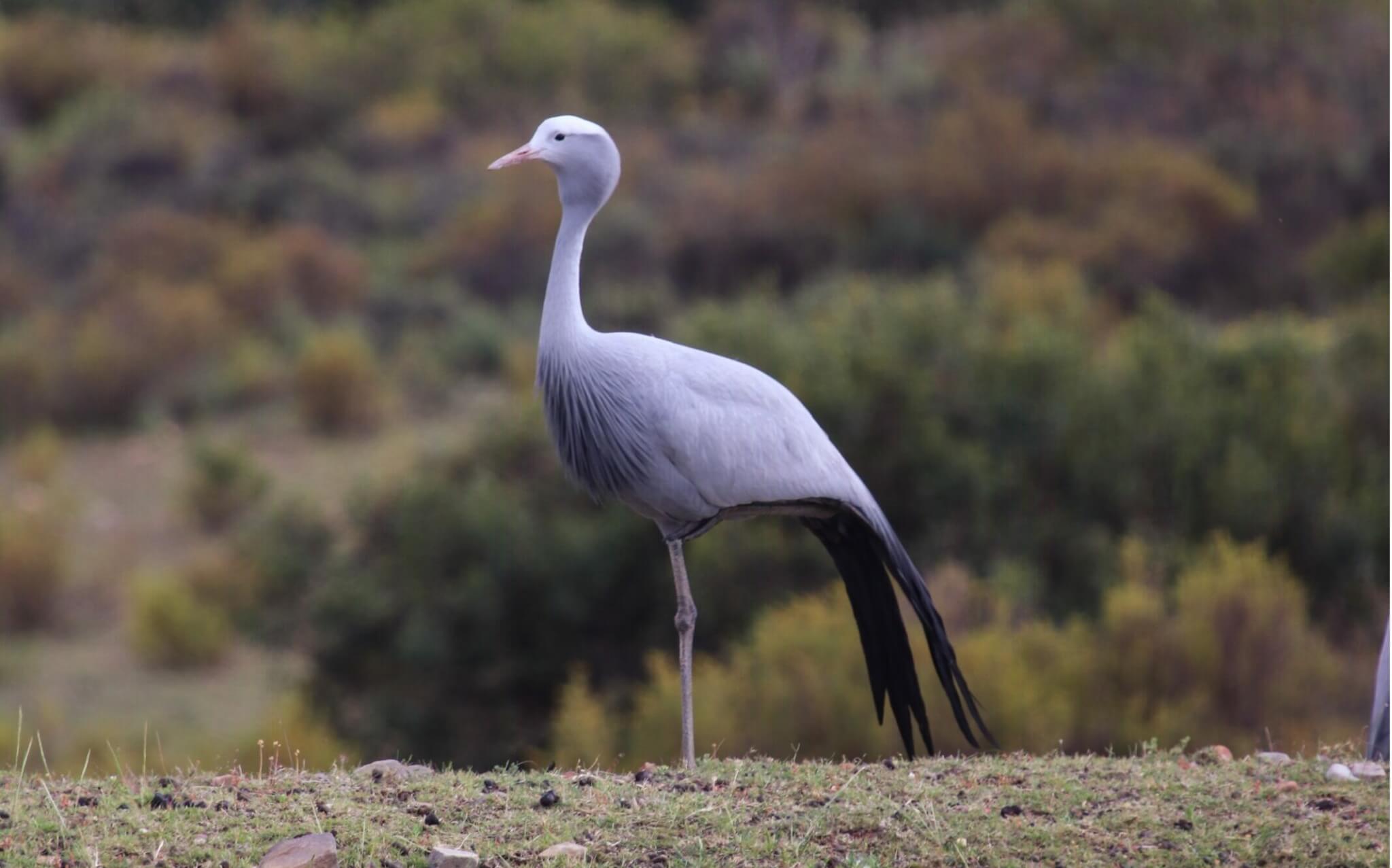All About The Blue Crane
Melozhori is a bird-lovers paradise with 131 recorded species including the fascinating Blue crane. As South Africa’s national bird, they boast rich cultural importance and a silvery bluish grey appearance. As proud custodians over the habit of these threatened birds, we bring awareness to them whenever we can. Read more to learn everything you need to know about them.
National Bird
The Blue crane is the national bird of South Africa, found on our coins and stamps. The most range-restricted member of the crane family, they are near-endemic to the country, with small populations found and isolated groupings found in Namibia, Botswana, Zimbabwe and Swaziland. Healthy populations can be seen in Eastern Cape, western KwaZulu-Natal and southern Mpumalanga, and the majority can be found in the Overberg region of the Western Cape.

Cultural Significance
According to SANBI, the Blue crane is a significant bird in the amaXhosa tribe, who call it indwe. Men were often presented with feathers of the bird when they performed brave deeds, to be displayed in their hair. After a battle, the chief would arrange a ceremony called ukundzabela during which the feathers would be awarded.
They are also of significance to the Zulu people, whose warriors and kings wore feathers as a headdress. Due to the cultural association with warriors and heroism, the Isitwalandwe Medal was created to honour those who had made great sacrifices and outstanding contributions to the liberation struggle in South Africa in the late 90’s.
Soul Mates
Blue cranes are monogamous by nature, pairing with just one mate in their lifetime. To woo one another, the birds will perform a lively courtship dance – jumping up and down with extended winds. Breeding pairs nest alone, away from others, and are significantly territorial during this period. They nest on the ground, typically in summer, and lay two eggs on average each year. The eggs are incubated by both sexes, but the male’s primary role is to defend the nest against possible danger. When not breeding, Blue cranes are generally sociable, gathering to form flocks of 50 – 300 birds.
What’s In A Name
The scientific name of the Blue crane is Anthropoides paradiseus, the latin word paradiseus meaning ‘paradise’ and most likely referring to their almost angelic appearance. It is also known as the Paradise crane, the Stanley crane, bloukraanvoël in Afrikaans; indwe in Xhosa and Zulu and mogolodi in Sepedi.
Threats & Vulnerability
The species is officially listed as Vulnerable (and Moderately Depleted) by the International Union for Conservation of Nature IUCN. While over 26 000 birds remain, their numbers suddenly declined around 1980 due to threats such as human population growth, residential and commercial development, the conversion of grasslands to commercial plantations, accidental or deliberate poisoning and renewable energy construction.
In South Africa, The Overberg Crane Group (OCG) is a community organisation working to protect the Blue crane, providing support to land users to deal with human-wildlife conflict, raising awareness about them and collecting useful data on their populations.
Bird-watching enthusiast or self-declared Twitcher? Bring along a pair of binoculars and a camera during your first (or next) trip to Melozhori Private Game Reserve to capture some unforgettable sightings. Get in touch with us to book your stay today!
Sources: